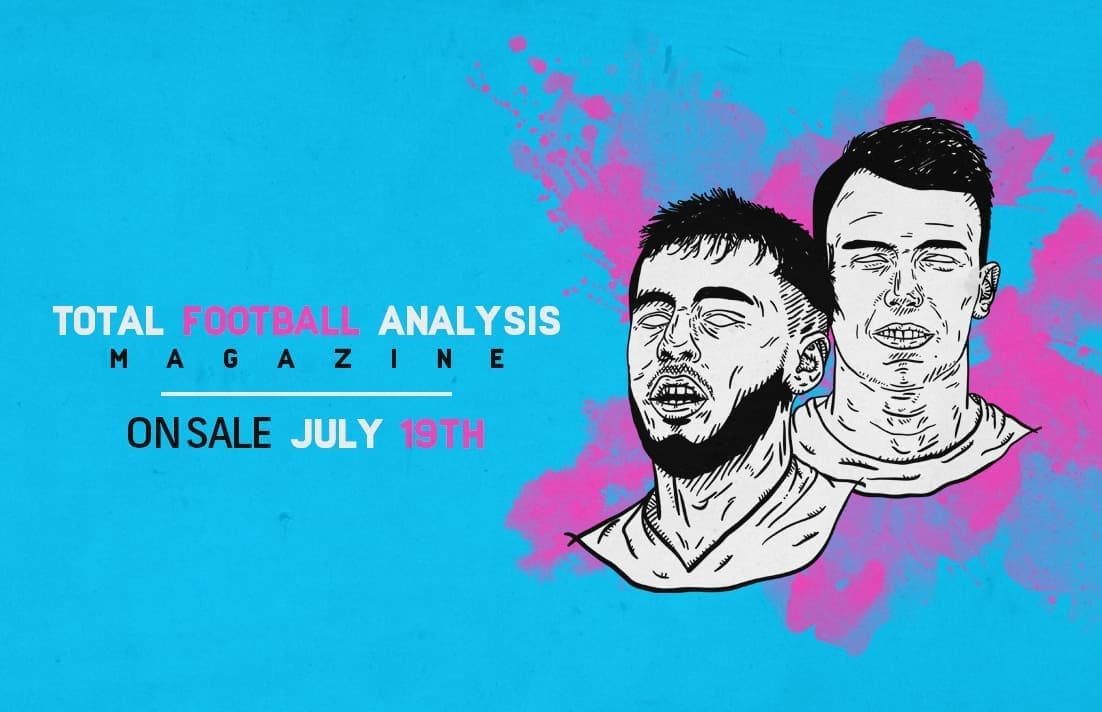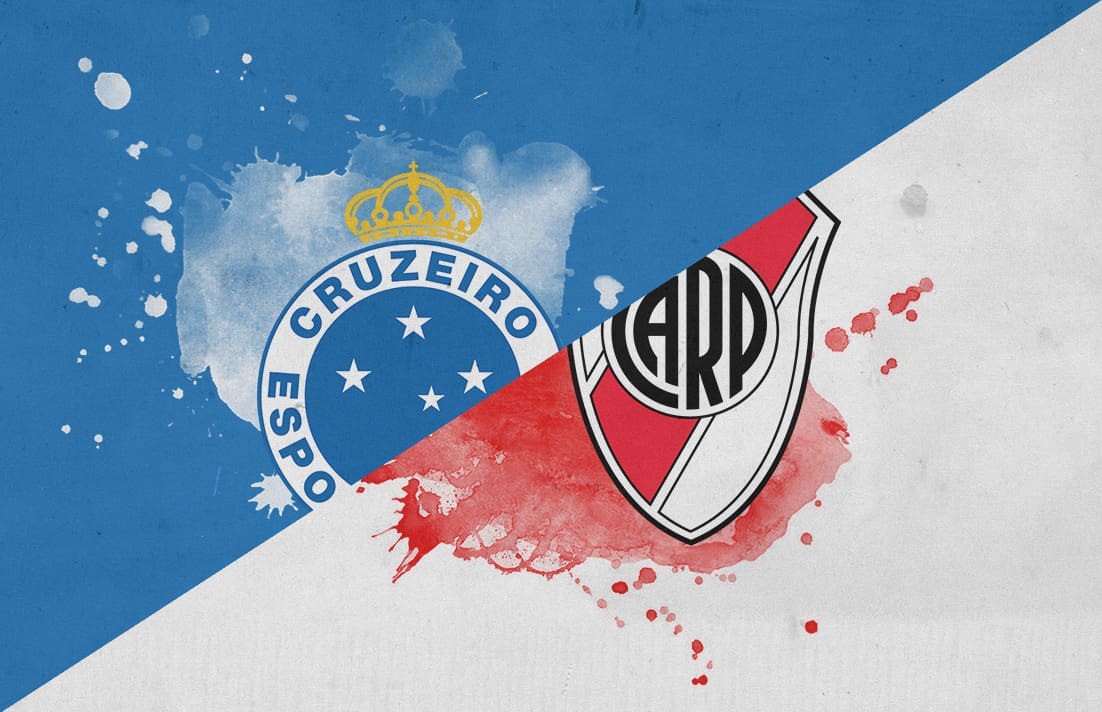The second leg of the Copa Libertadores Round of 16 between Cruzeiro of Brazil and River Plate of Argentina was very even. It was a strategically very interesting match to carry out the respective tactical analysis. Cruzeiro and River drew 0-0 in a game that prioritized defensive tactics. There wasn’t much freedom for the players and that’s why it was defined in the penalties.
After 180 minutes of football, no team could impose their tactics. The two round of 16 games ended with a 0-0 draw. That’s why tactical analysis is so important. In the penalties, River, the reigning Copa Libertadores champions, imposed their hierarchy. The great figure ended up being goalkeeper Franco Armani, who stopped two penalties and River won 4-2.
The following tactical analysis will show why neither team was able to take advantage. Both coaches decided to be very careful with the tactics imposed and the strategic approach of the game. In addition, this analysis will also show the tactical strengths and weaknesses of Cruzeiro and River.
Lineups

Mano Menezes, Cruzeiro’s coach, employed a 4-4-2 formation to face this match. It was a surprise from the start, as Menezes’ tactical proposal was reactive. Cruzeiro didn’t want to risk too much and that was evident from the start of the game. In fact, the two lines of four players worked more defensively than in attack. That was obviously due to the players’ characteristics.
Menezes opted for two very strong centre backs like Dedé and Léo, physically very powerful players. The full-backs were Luis Orejuela and Egídio, who had specific tactical orders from Menezes. While one was attacking, the other was defending so as not to leave Cruzeiro with a tactical imbalance. The midfielders were always behind the ball line. Thiago Neves and Pablo Rocha could do little in attack.
River coach Marcelo Gallardo, for his part, surprised with the initial formation by a player: Jorge Carrascal. No one expected the inclusion of Colombian Carrascal and ended up being the figure of the match. Or at least, the player who tried to get out of the tactical idea to do something different. River played with a tactical system of 4-1-3-2 with an interesting disposition on the part of Gallardo.
The starting line-up included Robert Rojas as a centre back and Milton Casco as a left full-back. Leonardo Ponzio was the defensive midfielder, but with the habitual collaboration in that zone of the pitch of Enzo Pérez. Ignacio Fernández and Jorge Carrascal were the midfielders on the wings. Both players changed during the match several times of wing, a tactical idea that Gallardo usually realizes. Lucas Pratto and Rafael Santos Borré were the strikers, who also performed important táctical tasks.
Cruzeiro’s Tactics
The tactical approach of Mano Menezes in this game surprised their own and strangers. In the first leg, Cruzeiro opted to prioritize order and defensive tactics. This tactic was logical and according to what could be presented in that match. But in this second leg, a more proactive Cruzeiro was expected, something that didn’t happen.
Despite playing at home and getting a draw in the first leg, Cruzeiro did not change tactics. Menezes used the same 4-4-2 formation based simply on order. Two lines of four players together enough to try to counter River’s attacking potential.
In fact, Cruzeiro didn’t even pressure River. Menezes’ idea was simply to wait for River to make a mistake. Cruzeiro exerted no pressure to get the ball back and let River handle the game. That means the tactic was totally reactive. That is to say, to wait for a mistake of the rival, to recover the ball and to attack. Cruzeiro’s idea was to create danger for River with as few passes as possible and without elaborating a lot of goalscoring opportunities.


Midfield in rhombus
In a 4-4-2 formation, midfielders take on a special role. The four midfielders cover the width of the pitch but do not necessarily play in line. In this case, Romero, Henrique, Cabral, and Gabriel applied that law.
Henrique was the central or defensive midfielder. At times he was the only one who didn’t get ahead on the pitch to try to generate attacks. When the team had the ball Henrique took the role of covering from the centre to the right and left. In other words, he was in charge of covering his team-mates in midfield.
Romero and Gabriel, the external midfielders should have more freedom to attack, but this was not the case. Both were more concerned with defending on the four-player line. Although when Cruzeiro had possession of the ball the tactic changed. Romero was closer to Henrique and played as an internal right midfielder. While Gabriel occupied the position left by Cabral to play as a left internal midfielder.
Finally, Cabral was the freest midfielder. The Argentinean player left his defensive midfielder position next to Henrique and went several meters ahead. This generated a kind of rhombus in the middle of the pitch with the four players within a range of a few meters. In addition, Cabral was in charge of being the link between midfielders and strikers.

Poor occupation of space
The times that Cruzeiro had the possession of the ball to generate plays from the backline occupied badly the spaces. Dedé and Léo tried at times to make passes for the team to go a few meters ahead on the pitch. The problem was the space left between the backline and the midfielders, which facilitated the work of River.
River’s forwards pressed and positioned themselves within the space left by Cruzeiro’s players. This generated that the displacement of the fullbacks, Orejuela and Egídio, did not have sense. Both players tried to generate amplitude by positioning themselves very close to the sideline, but they were well referenced. Cruzeiro lacked a clean and deep exit for this reason.

River’s tactical movements
In the tactics of Marcelo Gallardo and in his formations the central midfielder has a very important role. In this match, he was Leonardo Ponzio. This player was the one who usually occupied a position in the middle of the two centre backs to generate a clean exit. From Ponzio’s position, the team began to accommodate tactically. With Ponzio located between the two centre backs the other players already knew what to do.

In addition, Cruzeiro’s little or no pressure helped Ponzio and made River’s task easier. Ponzio went back a few meters and was the first to receive a pass from the centre backs, Rojas or Martínez. Enzo Pérez went back a few meters to place himself behind Cruzeiro’s forwards. The fullbacks, Gonzalo Montiel and Milton Casco advanced several meters and generated amplitude.
The good movements of the River players generated many passing lines. In addition, Montiel, Pérez, and Casco formed a front row of three midfielders. This gave freedom to Fernandez and Carrascal, who generated the necessary imbalance in the attack. This also made Ponzio’s task easier, as he had several of his free team-mates to give them the ball.

River’s pressure
One of the main characteristics of this River is the intensity. Gallardo has prepared his team very well from a technical, tactical, psychological and physical point of view. That’s reflected in the stifling pressure the team exerts for most of the game. Gallardo’s idea is that River recovers the ball as quickly as possible to create problems for the opposing team. Or in its defect, through the pressure to generate a mistake of the opposite team.
This high pressure of River started from the strikers. Borré and Pratto were in charge of pressing Cruzeiro’s backline. This meant that Dedé and Léo had to make very long passes to try to jump River’s pressure lines. In addition, Fernández, Pérez, and Carrascal referenced every Cruzeiro player who might receive a pass.
Each River player knew very well which Cruzeiro player to press. This created discomfort for the Cruzeiro players, who were not able to receive the ball freely. This was a very well planned tactical work by Gallardo and showed that River is a very complete team.


Conclusion
Generally, these types of matches are very even. Matches in direct elimination phases are almost always this closed. Teams are cared for, teams try to defend rather than attack. There are few goal opportunities and defensive tactics are the priority among coaches. Even arriving at the definition of penalties is never ruled out, as happened in this duel between Cruzeiro and River.
Cruzeiro was knocked out and will now have to think only of the Brasileirão, in which they have had a terrible start. Cruzeiro is 16th in the standings with just 10 points from 12 games played. In addition, they are only one point above the teams in the relegation zone. Mano Menezes will have to change the situation by opting for a more offensive tactic, as Cruzeiro is overdoing the reactive tactic.
Marcelo Gallardo’s process continues to bear fruit at River Plate. The Argentinian team continues to advance in the Copa Libertadores. Now they will have to face Cerro Porteño, a very complicated Paraguayan team, in the quarterfinals. River has a very clear tactical idea and the players understand it perfectly. You can see that tactical idea on the pitch. As long as River continues to opt for that tactic, they will be candidates to win the Copa Libertadores.

If you love tactical analysis, then you’ll love the digital magazines from totalfootballanalysis.com – a guaranteed 100+ pages of pure tactical analysis covering topics from the Premier League, Serie A, La Liga, Bundesliga and many, many more. Buy your copy of the July issue for just ₤4.99 here, or even better sign up for a ₤50 annual membership (12 monthly issues plus the annual review) right here.






Comments